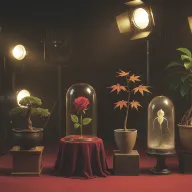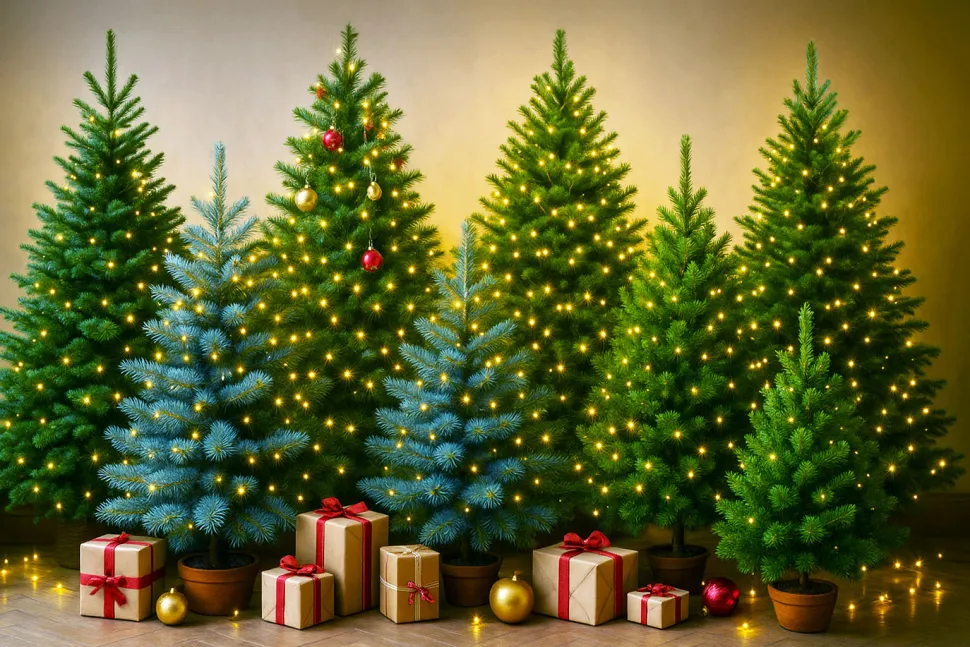
Natural Christmas tree: 8 varieties to make the right choice
Article for :All parent plants
You've resolved the thorny dilemma between artificial and natural fir and decided to opt for a real tree? Now you have to choose from all the available varieties. Nordmann, Douglas fir, spruce... We present to you the most beautiful Christmas trees, their qualities and their defects!
# 1 The classic: common spruce (Picea abies)
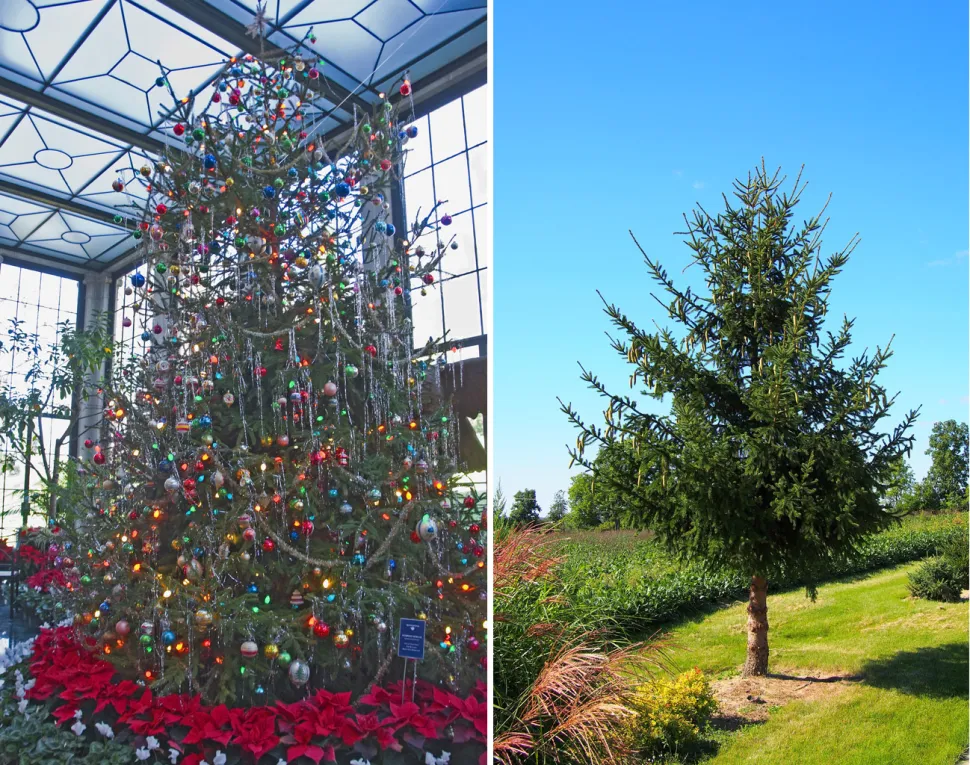
The common spruce with and without its tricks - Photos by Ron Cogswell and F.D.Richards
Norway spruce (Picea abies var. Abies) is the traditional fir, the one we used to buy before Nordmann spruces swept through our living rooms. Its success is not only due to its low price. With its pyramid shape, delicate fragrance, dense branches and dark needles, it is the very embodiment of the Christmas spirit.
But the common spruce doesn't stand up well to our heated interiors, and tends to lose its needles quickly. If you buy it too early, you run the risk of spending Christmas Eve in front of an unplucked tree..
# 2 The most popular: the Nordmann fir (Abies nordmanniana)
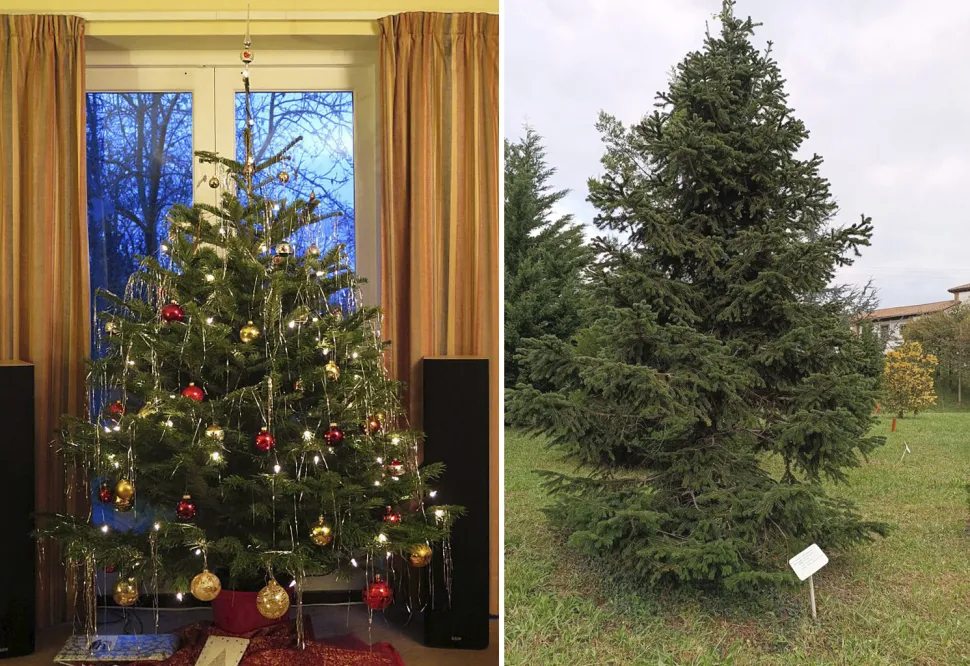
How do you like your Nordmann fir? - Photos by Andrew Fogg and Bernardoo
If you think there's no such thing as the perfect Christmas tree, nordmann fir (Abies nordmanniana) might just change your mind. Its conical silhouette and perfect symmetry look straight out of a Coca-Cola ad, and its strong fragrance will save you the 30-euro Yankee Candle. And because it doesn't lose its needles, even next to the radiator, it's the ideal choice for anyone who doesn't want to spend December vacuuming.
This perfection comes at a price! The Nordmann fir is one of the most expensive on the market! It costs between 30% and 50% more than common spruces... It's up to you to decide whether it's worth it.
#3 The most imposing: Douglas fir (Pseudotsuga menziesii)
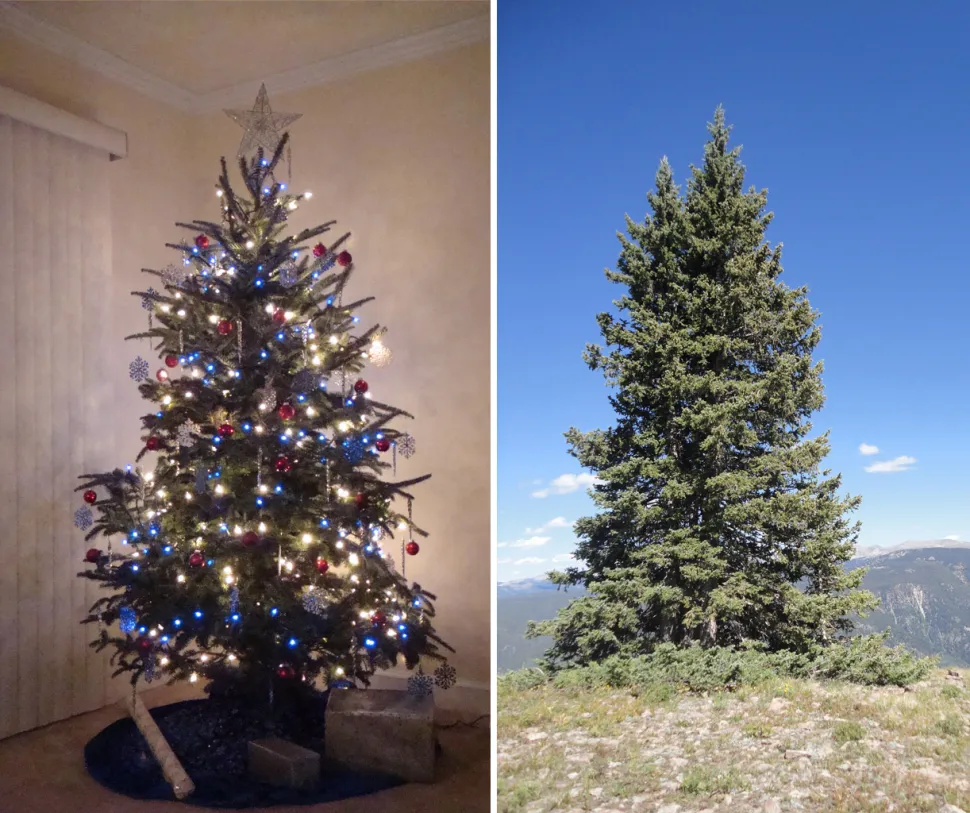
Indoors or out, make room for the Douglas fir - Photos by Kelli and Paul Sableman
Pyramidal, tall and bushy, the Douglas fir (Pseudotsuga menziesii) is very popular in the United States. It's easy to imagine this tree, with its fragrant dark-green needles, decorating a majestic entryway at the foot of the stairs. In your studio, on the other hand, it's likely to look a little too much.
The tree is big, but not very strong. Its branches aren't very strong and easily bend under the weight of the decorations. A variety to be reserved for fans of minimalism, popcorn garlands and strings of paper angels.
# 4 The most colorful: blue spruce (Picea pungens)
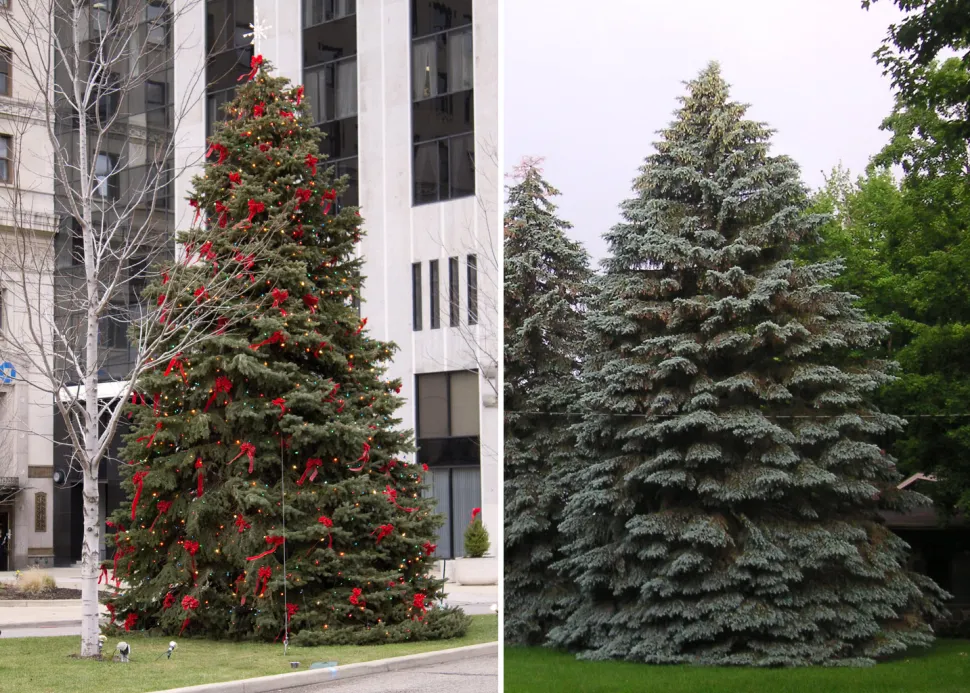
With its conical, bushy habit, the blue spruce is a sure bet - Photos by Jack Pearce and Beatrice Murch
The blue spruce Picea pungens), sometimes also called the Colorado fir, is the solution for a colorful Christmas tree without having to choose an artificial model. The botanical variety has almost turquoise-blue needles, and there are hybrids with very blue or even silvery foliage. The icing on the cake is the Colorado fir's robust branches, perfect for supporting baubles, and its needles are relatively long-lasting for a spruce.
Its main drawback is its prickly needles, which also give off an unpleasant odour when crushed.
#5 America's favorite: Scots Pine (Pinus sylvestris)
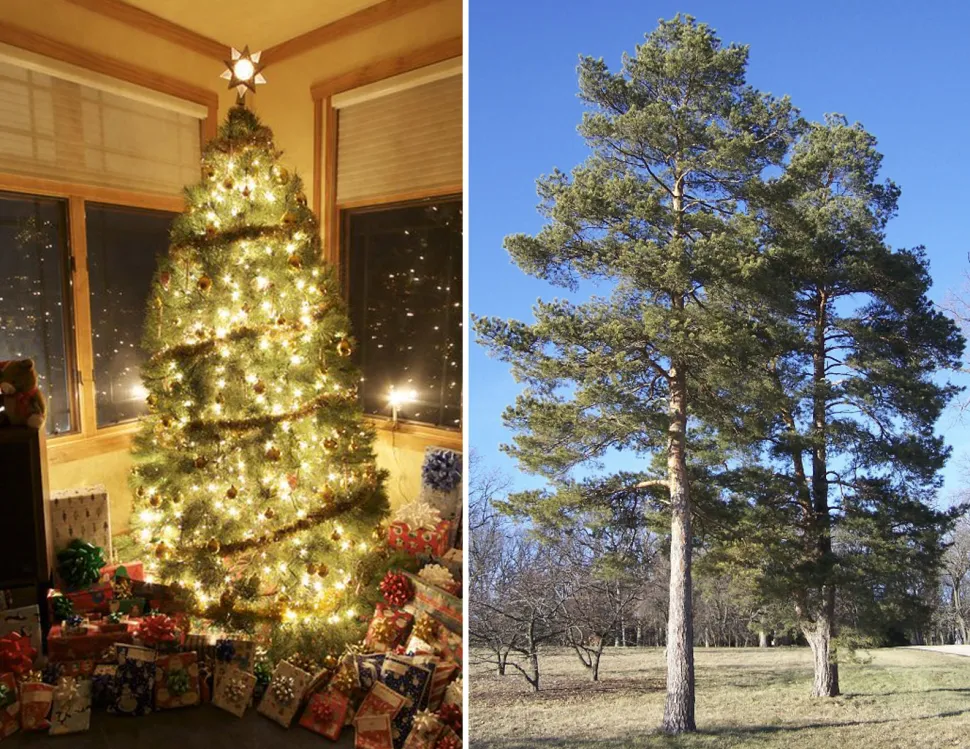
This Scots pine is so pretty it almost overshadows the presents - Photos by Ken and Bruce Marlin
Fancy a Christmas like the one in those TV movies where the city girl returns to her village and falls in love with the first not-too ugly guy she meets? Then you need a Scots pine (Pinus sylvestris). This tree with its bluish-green needles and dense crown is America's favorite. It accounts for 30% of Christmas tree sales across the Atlantic.
Although the needles are prickly and can make decorating a little painful, they are quite resistant to the dry heat of our apartments. They remain on the branches for three to four weeks, even on cut trees.
# 6 The strongest: noble fir (Abies procera)
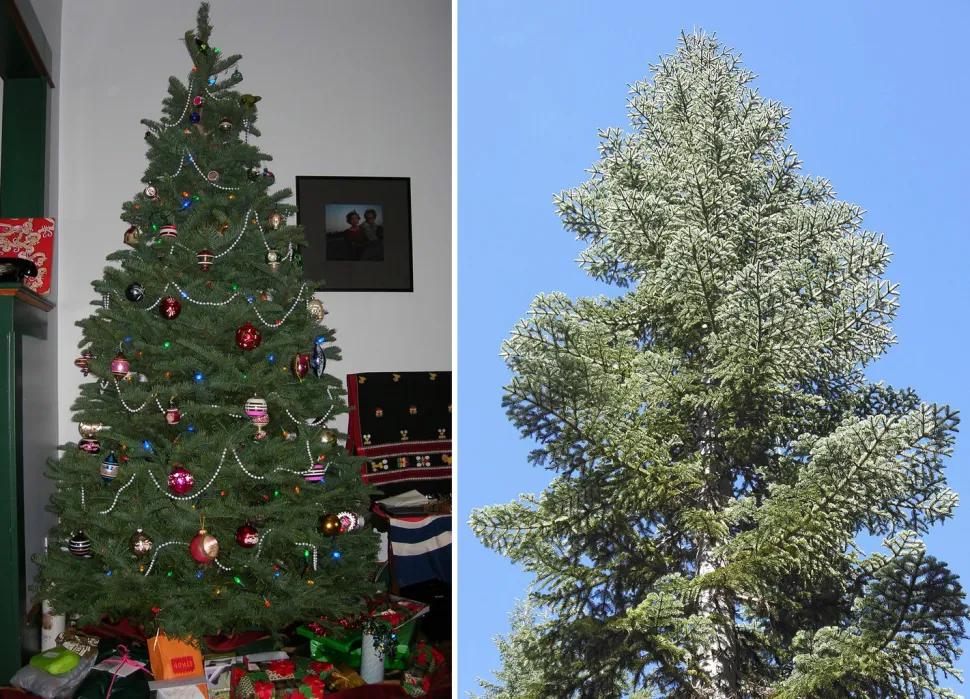
These people haven't read our article. They don't know that you can go all out on decorating with noble fir - Photos by Cajsa Lilliehook and Jsayre64
If you're a lover of busy decorations, XXL garlands and glass ornaments, the noble fir (Abies procera) is for you. Its sturdy branches will support all your decorative eccentricities.
Its strength isn't its only seductive asset. Its soft bluish needles give off a delicate resin scent when rubbed. As is often the case, the main drawback is its price. Long to grow, Abies procera is also more expensive than other varieties.
# 7 The prickly one: Fraser fir (Abies fraseri)
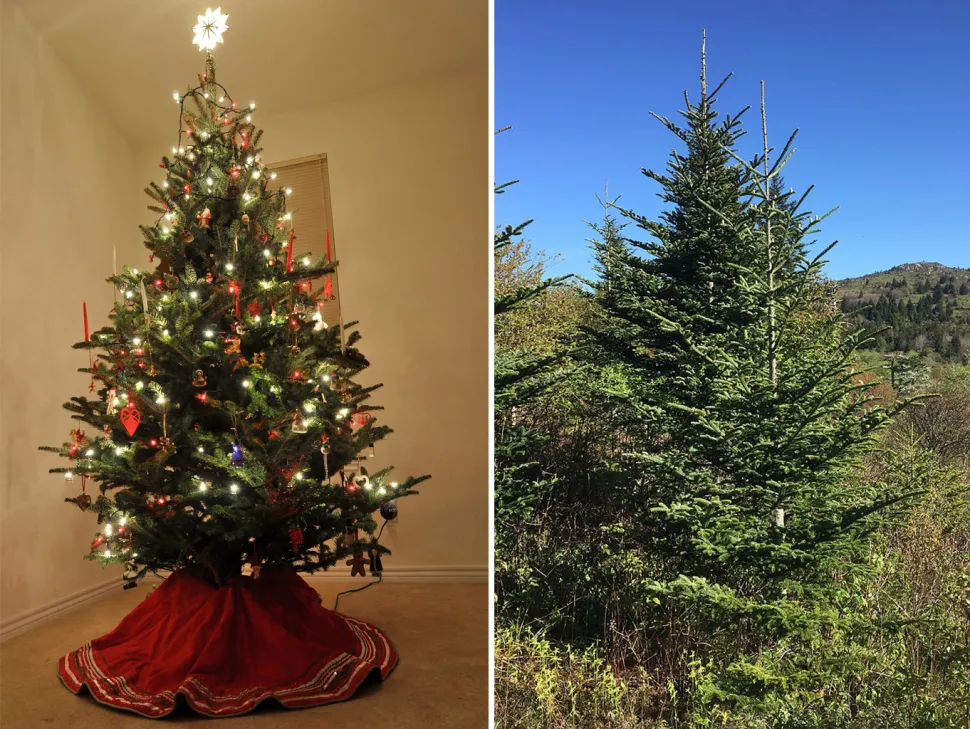
After the holidays, you can replant your Fraser fir in your garden. -Photos by Anders B; and Famartin.
The Fraser fir (Abies fraseri) is perfect for small spaces and for anyone spending Christmas with young children or pets. This variety hasa compact pyramidal habit and its soft, silver-green needles are harmless. What's more, they're also fairly heat-resistant.
But if you opt for a Fraser fir, remember that it will be the star of the show, not that giant ball you bought on your trip to New York. The lemon-scented foliage is so dense that it can be hard to hang your ornaments on it!
# 8 The cutest: balsam fir (Abies balsamea)
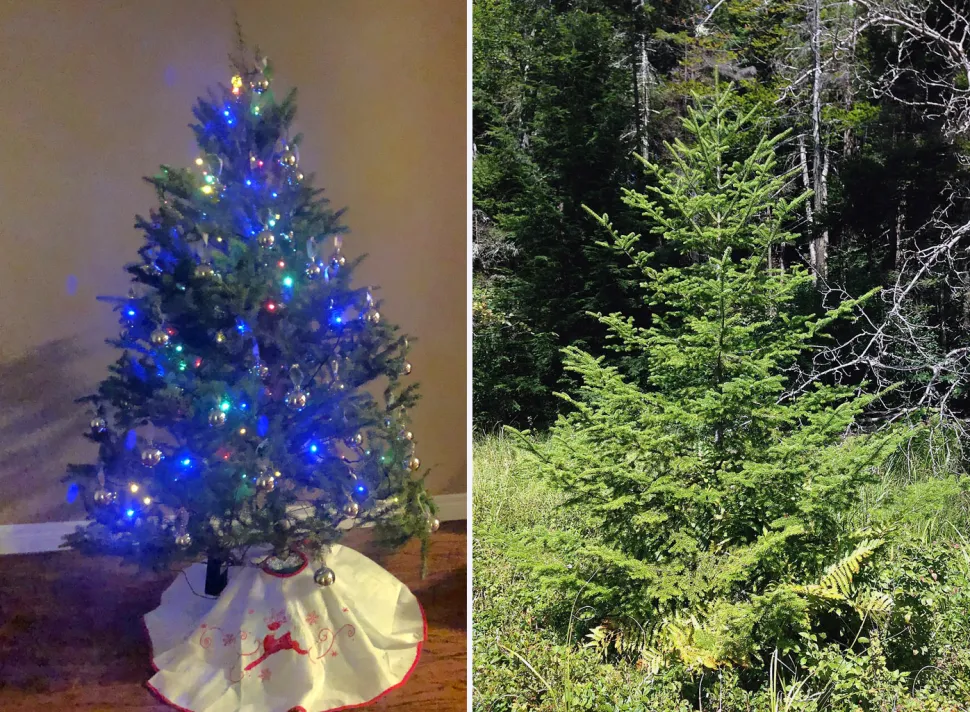
Too bad you can't smell the sweet scent of balsam fir in these photos - Photos by Paulo O and Famartin
When you come across a balsam fir (Abies balsamea), you almost want to give it a hug. Its conical shape, dense foliage and reassuring fragrance make it irresistible. Its flat, dark-green needles are also perfect for making garlands and wreaths.
The balsam fir also has an essential quality: its needles last for several weeks, as long as you don't stick it directly to the radiator. In addition to its aesthetic qualities, this advantage justifies a higher price than for other varieties.
By Servane Nemetz
on 17-10-2025 at 20h54
on 17-10-2025 at 20h54



